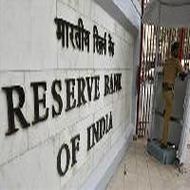This blog is created by Riken Mehta, Research Analyst who tracks Indian equities, derivatives and commodities.
Friday 31 May 2013
Tuesday 28 May 2013
Report card: How broking firms grade Coal India Q4 results

Riken Mehta
Moneycontrol.com
Shares in Coal India jumped to three-month high on Tuesday after its consolidated fourth quarter earnings beat estimates coupled with news of price hike.
Coal India 's fourth quarter (January-March) consolidated net profit rose 34.9 percent year-on-year to Rs 5,414 crore. Its sales grew by 2.5 percent to Rs 19,904.5 crore from Rs 19,419 crore Y-o-Y, which too came in marginally above forecast.
Coal India said it would raise prices as of Tuesday, adding the hikes would increase revenue by about Rs 2119 crore for the rest of the fiscal year 2013-14.
Broking firms remain upbeat on Coal India after company's fourth quarter earnings and price hike. The offer for sale by the Government still remains major overhang for the stock.
Morgan Stanley: OVERWEIGHT
Morgan Stanley has retained its ‘overweight’ rating on the stock citing the company on its way to deliver healthy production growth in FY2014.
“We expect CIL to raise FSA prices in the near term. With a cash balance of USD 11.5 billion at end-FY2013, we expect CIL to increase its dividend payout in the next two years, translating into yield of 8.2 percent in FY2014 and 9.4 percent in FY2015,” said the Morgan Stanley report.
Elara Capital: ACCUMULATE, TP: Rs 364
Brokerage house Elara Capital has maintained its 'accumulate' rating on Coal India as the firm believes the stock looks attractive from the point of dividend yield and cheap valuation. Elara Capital has a price target of Rs 364 per share.
JM Financial : BUY, TP Rs 370
Domestic broking firm JM Financial has maintained its 'buy' rating on Coal India with a price target of Rs 370.
“Offer for sale by GoI is the key overhang on stock going forward with limited visibility on timing of the offer. We believe the stock has limited downside at current valuations and with triggers like higher dividends, price hike and production are expected to pan out in short to medium term, we maintain 'buy' with target price at Rs 370,” said the JM Financial note to clients.
Kotak: BUY, TP Rs 410
Kotak Institutional Equities has marginally revised its earning estimates of Coal India and also raised its target price to Rs 410 from Rs 404 earlier.
"Financial performance and reasonable valuations notwithstanding, unresolved business issues around incremental coal supplies and an impending stake sale have so far kept stock performance under check that may be catalyzed by the revision in coal prices. Maintain buy with a price target of Rs 410 per share," said the Kotak note.
Monday 27 May 2013
How broking firms rate Crompton Greaves Q4 results
Engineering major Crompton Greaves fourth quarter consolidated net profit plunged 75 percent to Rs 25.3 crore from Rs 100 crore, a year ago on account of higher expenses. The company posted 10 percent growth in its net sales at Rs 3387 crore compared to Rs 3087 crore in the same quarter last fiscal.
The earnings before interest, tax, depreciation and amortization (EBIDTA) also more than halved to Rs 77.9 crore from Rs 213 crore in the previous fiscal. EBITDA margins were also down by 460 basis points to 2.3 percent from 6.9 percent earlier.
Brokerage house Bank of America Merrill Lynch has maintained its 'underperform' rating on the stock with a price target of Rs 104 citing weak fourth quarter has left a lot unanswered for FY14. The firm sees no visibility on sustainable turnaround in international operations with the current product mix. BoAML has also cut its FY14 and FY15 earnings estimates by 11 percent.
Meanwhile, brokerage house Macquarie has maintained its 'underperform' rating on the stock with a price target of Rs 83 on concerns of continuous decline in its standalone margins. It has cut its FY14E EPS by 14 percent based on a lower margin assumption for the domestic business. The turnaround in subsidiaries also remains uncertain and this will continue to be a serious overhang on the stock.
UBS too has 'sell' rating on Crompton Greaves with a price target of Rs 90 as the broking firm believes the business environment for the company continues to remain very challenging. UBS feels in absence of near-term triggers, the stock may continue to underperform.
However, Morgan Stanley remains bullish on the stock and has maintained its 'overweight' rating citing strong order book position. Morgan Stanley expects revenue growth to remain comfortable and margins in the international power segment to recover.
The earnings before interest, tax, depreciation and amortization (EBIDTA) also more than halved to Rs 77.9 crore from Rs 213 crore in the previous fiscal. EBITDA margins were also down by 460 basis points to 2.3 percent from 6.9 percent earlier.
Brokerage house Bank of America Merrill Lynch has maintained its 'underperform' rating on the stock with a price target of Rs 104 citing weak fourth quarter has left a lot unanswered for FY14. The firm sees no visibility on sustainable turnaround in international operations with the current product mix. BoAML has also cut its FY14 and FY15 earnings estimates by 11 percent.
Meanwhile, brokerage house Macquarie has maintained its 'underperform' rating on the stock with a price target of Rs 83 on concerns of continuous decline in its standalone margins. It has cut its FY14E EPS by 14 percent based on a lower margin assumption for the domestic business. The turnaround in subsidiaries also remains uncertain and this will continue to be a serious overhang on the stock.
UBS too has 'sell' rating on Crompton Greaves with a price target of Rs 90 as the broking firm believes the business environment for the company continues to remain very challenging. UBS feels in absence of near-term triggers, the stock may continue to underperform.
However, Morgan Stanley remains bullish on the stock and has maintained its 'overweight' rating citing strong order book position. Morgan Stanley expects revenue growth to remain comfortable and margins in the international power segment to recover.
How brokerages view Reliance Industries-BP oil find

Riken Mehta
Moneycontrol Bureau
Reliance Industries (RIL) on Friday announced a huge natural gas discovery, possibly the biggest find ever, in the flagging eastern offshore KG-D6 block that will be crucial in arresting its falling gas output. The company has not disclosed estimates but media reports have suggested that reserves may be more than pre-drill best estimate of 1.2 trillion cubic feet equivalent.
Brokerage house Goldman Sachs has reiterated its 'Buy' rating on Reliance Industries with 12-month sum of the parts based target price of Rs 1,070 citing RIL’s capex in core segments that will lift its cash returns over the medium term.
"The announced discovery looks significant given that the largest D6 discovery had a gross hydrocarbon column of 194 mts (MA-2 well). Moreover, if this discovery leads to a new commercial reservoir, it could meaningfully add to D6 reserves, in our view. Overall, we believe, this discovery further strengthens our view that RIL’s E&P business is turning around," said the Goldman Sachs note to clients.
Brokerage house Barclays has retained its 'equalweight'rating on Reliance Industries with a target price of Rs 870 pending more clarity on MJ-1’s key parameters.
"We hypothesize that MJ-1 could be worth USD 2.5 billion (USD 8.1/boe) based on 1.5tcf and 60million barrels, USD 1.9 billion capex (USD 6/boe), a FY17 start-up and assuming that it is not ring-fenced. This translates to Rs 28 per share for Reliance’s 60% share. Niko (10% share) was up 23% on Friday adding USD 100m in market-cap or Rs 11 per share for Reliance’s 60 percent share," said the Barclays note to clients.
CLSA too has retained its 'outperform' rating on the stock citing final decision on doubling of gas price as the next key trigger in FY14.
"Reliance’s first exploration well after a near two year exploration hiatus has been announced as a “significant” gas and condensate discovery. Based on our estimated value of USD 4/boe for development upside from a gas and liquid discovery, this could a value of USD 650 million for ever 1TCF i.e. Rs 8 per share for Reliance’s 60 percent stake. We note that Niko added USD 92mn to its market cap on the back of this discovery given its 10 percent stake. Pertinently, sharp movement in Niko’s stock implies a possible addition of Rs 12 per share for Reliance," said the CLSA note.
Friday 24 May 2013
Crompton Greaves Q4 net plunges 75% to Rs 25 cr

Riken Mehta
Moneycontrol Bureau
Engineering major Crompton Greaves fourth quarter consolidated net profit plunged 75 percent to Rs 25.3 crore from Rs 100 crore, a year ago on account of higher expenses. The company posted 10 percent growth in its net sales at Rs 3387 crore compared to Rs 3087 crore in the same quarter last fiscal.
Total expenses of the company also shot up by more than 13 percent from Rs 2928.07 crore to Rs 3354.69 crore, mainly on higher inventories which accounted for Rs 176.92 crore.
The bottomline figure would have been much less if not aided by higher other income of Rs 5.14 crore (previous year Rs 31 lakh) and tax reversal of Rs 7.77 crore (previous year tax expense of Rs 39.63 crore). The interest cost also shot up from Rs 13.94 crore to Rs 20.82 crore.
The earnings before interest, tax, depreciation and amortization (EBIDTA) also more than halved to Rs 77.9 crore from Rs 213 crore in the previous fiscal. EBITDA margins were also down by 460 basis points to 2.3 percent from 6.9 percent earlier.
Shares of Crompton Greaves closed at Rs 96.85, down 1 percent on Friday.
Monday 13 May 2013
Are SBI, HDFC Bank, ICICI Bank really passing on rate cuts benefit to borrowers?

Riken Mehta
moneycontrol.com
Since April last year, the Reserve Bank of India has cut the benchmark repo rate by 125 basis points (1.25 percent), the cash reserve ratio by 75 basis points and the statutory liquidity ratio by 100 basis points.
Repo is the rate at which banks borrow overnight money from the RBI, cash reserve ratio is the percentage of deposits that banks have to mandatory park with RBI, and SLR is the portion of deposits that banks have to mandatory invest in government bonds.
Despite the easing of interest rates by RBI, the weighted average lending rates of banks have declined by less than 0.5 percent, according to RBI data.
Banks have said they are not in a position to reduce lending rates because of tight liquidity in the system.
Also, to reduce lending rates, they should be in a position to cut deposit rates as well, which they may not be able to do at a time when the growth in deposits has been slow.
The chart shows the trend in base rates of SBI, ICICI Bank and HDFC Bank over the last one year, compared to that in the repo rate and cash reserve ratio. Click here for chart
Tuesday 7 May 2013
Indian, Chinese services sector growth at multi-month low

Riken Mehta
Moneycontrol Bureau
Growth in Chinese and Indian services sector, two of the world's fastest growing economies eased sharply in April, a survey by HSBC showed on Monday. The HSBC services Purchasing Managers' Index (PMI) of China fell to 51.1 in April from 54.3 in March while that of India fell to 50.7 in April from 51.4 a month earlier.
A reading above 50 suggests activity in the sector is growing, while the same below 50 indicates it is contracting.
"The rate of expansion of new orders in China was the weakest since August 2011. In April, staffing levels in the Chinese service sector also decreased for the first time since January 2009." said the HSBC China note.
China's annual economic growth slipped to 7.4 percent in the third quarter, slowing for seven consecutive quarters and leaving the economy on course for its weakest showing since 1999, said Reuters.
The HSBC India note says, "The pace of growth was the slowest in the current one-and-a-half year period of expansion. Total new business also rose at a weaker rate, although job creation was maintained."
Service sector accounts for almost 60 percent of India's GDP, so a slowdown in this sector is a bad sign for India. Last week data showed India's manufacturing activity growth also came to halt. RBI has also ruled out further easing of monetary policy and thrust now remains on the government to announce more measures to revive growth in the manufacturing and services sector.
Friday 3 May 2013
Chart: How Bank Nifty has reacted to RBI policy
Riken Mehta
Moneycontrol.com
The RBI today cut the benchmark repo rate by 25 basis points, as widely expected by the market. However, banking shares are under pressure as the central bank has made it clear that it has little room for further reducing interest rates, because of issues like high inflation, high current account deficit and supply constraints.
Bank stocks are under pressure as the RBI has projected a dour outlook on economic activity and business confidence. A slow paced recovery could further compound the problem of bad loans for the banking sector.
A quick look at how the Bank Nifty has reacted to the previous monetary policies.
Moneycontrol.com
The RBI today cut the benchmark repo rate by 25 basis points, as widely expected by the market. However, banking shares are under pressure as the central bank has made it clear that it has little room for further reducing interest rates, because of issues like high inflation, high current account deficit and supply constraints.
Bank stocks are under pressure as the RBI has projected a dour outlook on economic activity and business confidence. A slow paced recovery could further compound the problem of bad loans for the banking sector.
A quick look at how the Bank Nifty has reacted to the previous monetary policies.
Thursday 2 May 2013
5 reasons why Unilever is so keen to invest in HUL

Moneycontrol Bureau
Unilever Plc's offer on Tuesday for an additional 22.5 percent stake in its Indian arm Hindustan Unilever (HUL) at a 20 percent premium took most by surprise. This is Unilever's biggest deal in as many as 13 years since it acquired Best Foods for USD 23 billion. So why is Unilever betting so heavily on HUL at a time when the Indian economy is growing at its slowest pace in a decade?
Here are some reasons:
1. India is tied with Brazil as the second biggest market for Unilever in terms of turnover after United States where growth has slowed down, particularly in North America, as per Reuters report. Hindustan Unilever has the largest market share of Indian consumer market.
2. Unilever reported sales growth of 4.9 percent in its latest filing, its slowest quarterly growth in two years. Its earnings were boosted by 10.4 percent growth in emerging markets, which now account for 57 percent of its total revenue, according to Bloomberg.
Also Read - Offer of Rs 600/shr for HUL fair; won't raise it: Unilever
3. HUL, on the other hand, reported best ever annual operating profit margins of 20.22 percent. The last time it clocked 20 percent plus margins in 2003. The return on equity (RoE) which measures the ability of the company to generate profits with the money shareholder has invested was as high as 76 percent. Unilever’s RoE is much lower at 30.42 percent as per data compiled by Reuters. HUL is a debt free company.
4. Unilever targets to generate revenues of 80 billion euros by 2020 and three-quarters of it will come from the emerging markets like India and China.
5. Apart from raising stake in HUL, Unilever delisted its subsidiary in Pakistan last November and in 2009 it acquired controlling stake of its subsidiary in Vietnam. Unilever is clearly focusing on the emerging markets for future growth by either hiking stake or delisting subsidiaries.
Riken Mehta
riken.mehta@network18online.com
Subscribe to:
Posts (Atom)

